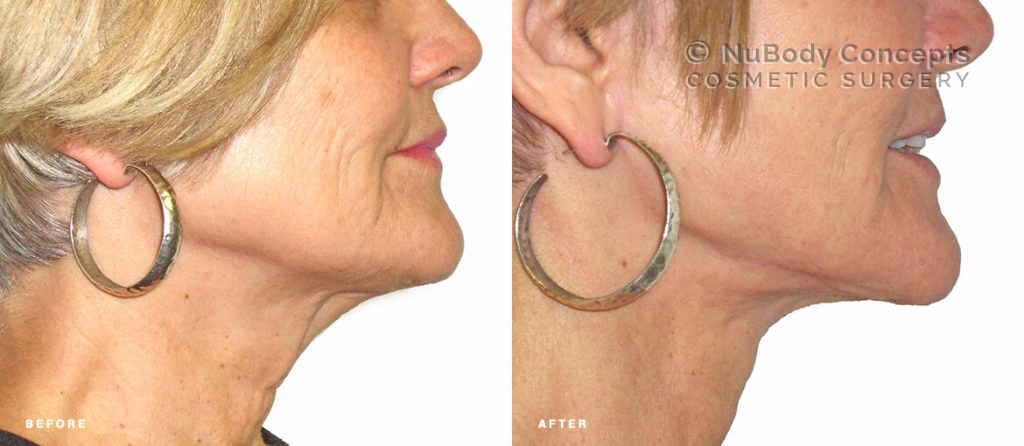
Medically reviewed by Dr. John Rosdeutscher – Written by Sine Thieme
Overview
Every patient’s recovery from a facelift is unique. Different factors can affect the length of the recovery, such as the patient’s overall health, age, and scope of their surgical procedure. Despite these differences there are a few general guidelines to promote healing after a facelift, including a list of do’s and don’ts every patient should follow.
Knowing what to expect is important to ensure a quick and smooth recovery. Our cosmetic surgery staff at NuBody Concepts in Nashville and Memphis have put together the following guidelines of what to expect from your facelift recovery. Please call with any additional questions you may have.
Physical Recovery
A typical facelift surgery takes approximately 2 hours. The patient is able to return home after their procedure, as long as a friend or family member can drive them home. Wound healing is expected to take between 3 to 5 days. We refer to this as the “pysical recovery.” As with any surgery, swelling and bruising are to be expected, with the swelling typically going down after a few days, and bruising taking 10-14 days to resolve. Your visible results will begin to appear when the wounds have healed. The sutures are typically removed at 7 days.
Social Recovery
As stated above, it may take anywhere between 10-14 days before the bruising has completely disappeared. For many patients, this is the time they feel comfortable showing themselves in public again. We call this the “social recovery” period. For some people, it may take 2 to 3 months for their face to feel “back to normal” in terms of texture, sensation, and elasticity.
It is important to continue using daily sun protection products to extend the results of your facelift. As with any surgical procedure, you should follow your physician’s post-op instructions to ensure the success of your surgery.
What To Expect During Facelift Recovery
Your recovery from facelift surgery starts with the application of dressings and bandages that are applied to the sutures right after the procedure is completed. You will typically not be expected to touch or change any of these dressings or strips to ensure that the wound healing is not disturbed. You will also be given a follow-up appointment that is important to keep, as the timeline for removal of facial dressings is time sensitive to ensure minimal scarring.
Your plastic surgeon will also send you home with a set of facelift post-op instructions that include:
- Information on when and how to wash your face post-surgery
- Medications to take orally as well as topical creams to promote healing and reduce the risk of infection
- Risks and concerns to be aware of and warning signs for when to call the doctor
- Instructions on activity levels and when it’s safe to resume exercise
- Warning about sun exposure
Before you go home, make sure to ask your plastic surgeon any questions you may have about the facelift recovery process. A few questions you might ask:
- Where will I be taken for initial post-op recovery after my facelift and how soon can I go home?
- Which prescription drugs do I need to take and for how long?
- When can I expect the dressings/bandages to come off?
- Will I need to schedule a return visit to have my stitches removed or will they automatically dissolve?
- How soon will I be able to resume daily activities and more strenuous exercise?
- When can I return to work?
To gain a better understanding of what to expect from your facelift recovery at each stage, we have outlined a general outline below:
Day of Procedure
On the day of your facelift, you will feel groggy from the anesthesia you received for the surgery. You may also experience some tenderness and mild pain in the treatment area.
You may not notice an immediate change in the contours of your face, since facelift surgery is more about subtle changes rather than big ones. And the post-op swelling to be expected will prevent you from seeing any actual results for the first week or so. Once the swelling has gone down you should be able to see your new look.
Facelifts are typically outpatient surgeries, meaning you can return home the same day of the procedure, provided you have a driver.
First Week Post-Op
Your surgeon will likely instruct you to do nothing that increases your hear rate above resting for the first 1-2 weeks. Make sure you follow instructions as to when and how to ice the affected area. Typically you are advised to wait 24 hours before applying ice compresses.
At some point during the first week of your recovery, you will likely be scheduled to see the nurse for a follow-up visit. He or she will check the surgical site to ensure proper healing and to remove stitches (if you have them and they are not self-dissolving).
Your nurse will likely recommend a scar treatment and give instructions on when and how often to apply a cream or ointment to the incision sites.
By the end of the first week most patients feel comfortable returning to work or regular activities. Most likely you will be physically able to perform most activities after just 1-2 days, but depending on the level of swelling you may choose to give it a week before showing your appearance outside of the home.
Four to Six Weeks Post-Op
At NuBody Concepts we advise facelift patients to refrain from strenuous activity entirely for the first 2 weeks. At two weeks you may resume cardio exercise, and at 4 weeks you’re typically cleared for weights and full exercise. However, it is important to get clearance from your plastic surgeon before engaging in physical activity that increase the blood flow.
You may experience itching, a burning sensation, or twinges that come and go. This is relatively normal for the first few weeks but should subside over time. As with any surgery, if the sensation persists or gets worse instead of better, you should call your surgeon for another appointment.
Any kind of incision is very sensitive to the sun, particularly in the face. It is of utmost importance to avoid all sun exposure for at least 3 months, and to be very careful for up to a year. Make sure you ask your plastic surgeon or nurse for the recommended sunblock to ensure you safeguard against any discoloration of the healing skin.
6 to 12 Months Post-Op
After 6 months to a year, you will likely notice a drastic change in your facelift scars. In the beginning, once the sutures have come off, your scars will be bright pink or red, and they may have a slightly puffy or lumpy appearance. Over time you can expect them to fade more and more – from red to pink to eventually white. The swelling of the scar tissue will also go down over time. Eventually your scars will appear as thin white lines and be nearly imperceptible.
Bear in mind that your plastic surgeon will have placed the scars in such a way that they are “disguised” from the naked eye, either along the hairline, under the chin, or behind the ears. Facelifts have a very high satisfaction rate and do not typically trigger concerns about scars.

A Few Facelift Recovery Tips
Facelift Do’s
- Keep your face elevated for the first few nights post-surgery to help reduce swelling.
- Follow all post-op instructions given by your surgeon carefully.
- Make sure to plan enough time off work for your “social recovery.”
- If you have small children, pre-arrange for childcare. Most doctors recommend not lifting anything heavier than a gallon of milk.
- Drink plenty of fluids leading up to the surgery and for the first few days after.
- Ask your plastic surgeon about scar treatment – scar massage techniques, products, etc – to help accelerate scar healing.
- Wear sunscreen at all times!
Facelift Don’ts
- Avoid sleeping on your stomach for the first week. It may be helpful to sleep in a recliner or propped up on pillows.
- Avoid pushing or pulling anything heavy (stroller, grocery cart, etc).
- Do not smoke or use tobacco products during your recovery period as it can interfere with your body’s ability to heal.
- Refrain from alcohol consumption for the first few weeks, as alcohol can lead to fluid retention and dehydration.
- Avoid sun exposure at all cost! Make sure you use adequate protection as prescribed by your surgeon if you are exposed to sunlight in the first month; wearing a hat in addition to applying sunscreen is the best way to protect yourself when sun cannot be avoided.
We hope that we have given you a good idea of what your facelift recovery will look like. For more information, also read our 7 Tips for your Facelift Recovery.
Are you considering a facelift in the near future? Contact us today to learn more about your options at NuBody Concepts. If you are ready to get started, use the pink button to schedule a consultation with our board-certified plastic surgeon in Nashville or Memphis.












